Funny Animals in the Southern United States
1 / 50
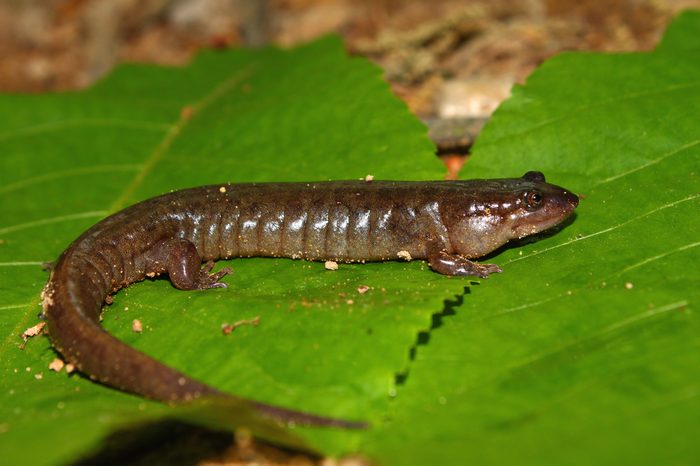
Alabama: Red Hills salamander
This official state amphibian is a long lean mean burrowing machine. Much larger than its other lung-less salamander peers at 11 inches, the Red Hills salamander breathes through its moist skin. It's on the U.S. Fish & Wildlife endangered species list because much of the 60,000 acres of suitable habitat (i.e., the steep slopes and moist ravines of hardwood forests) are threatened by logging and deforestation. Here are 14 other endangered animals that may surprise you.
2 / 50
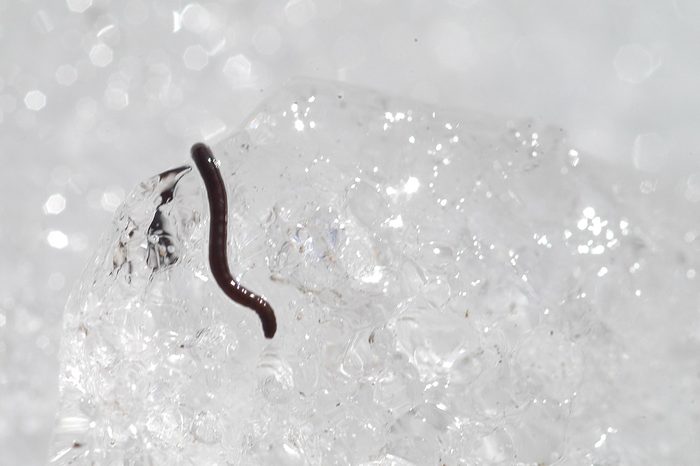
Alaska: Ice worm
This relative of common earthworms and leeches makes its home inside glaciers and adjacent snowfields, moving through densely packed ice crystals with ease thanks to small bristles on the outside of their bodies. Its Latin name, Solifugus, meaning sun avoider, is basically a warning to the annelids who thrive best at zero degrees Celsius. According to the Alaska Centers public lands guide, when heated to 40 degrees Fahrenheit, an ice worm's insides liquefy until it literally melts to death. Ouch!
3 / 50

Arizona: Javelina
Javelinas, also known as a collared peccary, are often confused for wild pigs thanks to their stumpy legs, porcine-like snouts, and tendency to communicate in snorts. But according to the Arizona-Sonora Desert Museum, these "new world" herbivores/frugivores (fruit eaters) are distinguished from their "old world" lookalikes by numerous physical features including a scent gland in their rump that they rub on rocks and stumps to mark territory and on each other for identification. Pigs, on the other hand, lack scent glands. Now that you know the difference between javelinas and pigs, challenge yourself with this quiz on nearly identical animals.
4 / 50
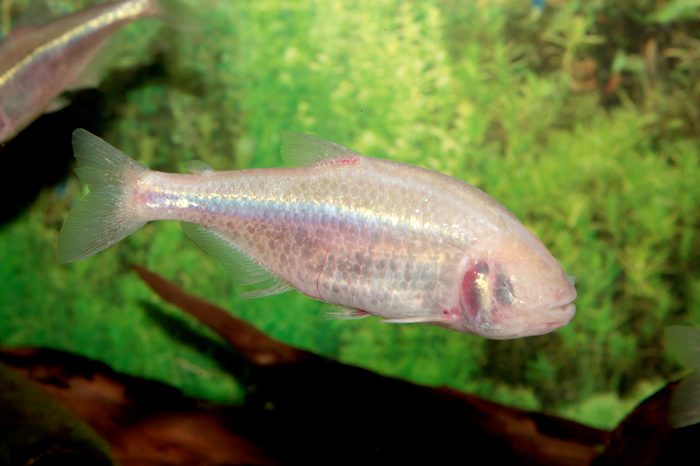
Arkansas: Ozark cavefish
These endangered and nearly translucent cave dwellers live most or all of their lives in total darkness. But they're blind because they lack eyes altogether and therefore use sense organs to detect movement in the water and find food. Very little is know about their reproductive habits, but the U.S. Fish & Wildlife Service and the Missouri Department of Conservation suspect that spring floods get them in the mood for making whoopee.
5 / 50
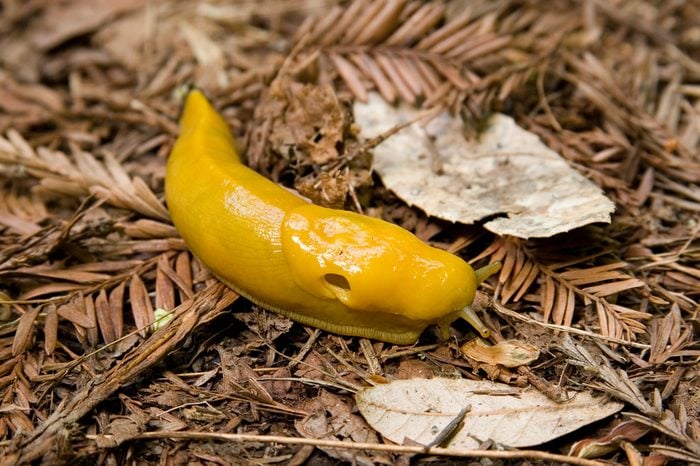
California: Banana slug
The sex life of these gooey, yellow mollusks is even more bizarre than their coloring or the fact that they inch down from high tree branches on thin strands of slime in much the same way as spiders utilize their webbing. For starters, according to a 1916 paper by Stanford University zoology professor Harold Heath, they are hermaphrodites. Two, a slug penis, which emerges from its head, can be as long as its entire body. That makes for some of the largest male genitalia of any species in proportion to its overall size. Three, reproductive sessions last hours and sometimes end in apophallation, which is when a banana slug gnaws off and eats its partner's privates. They do not grow back.
6 / 50
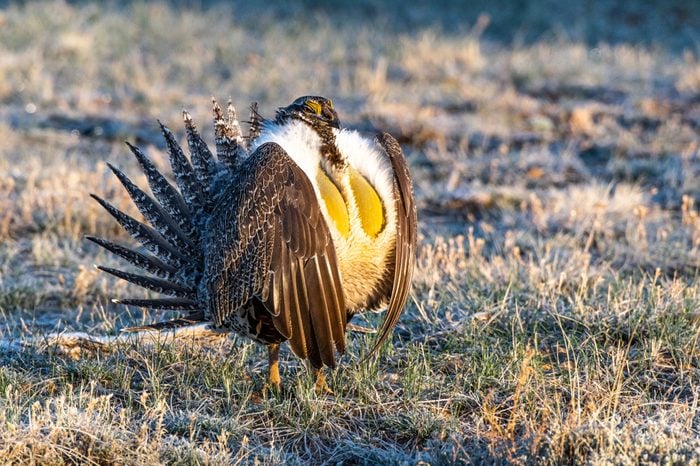
Colorado: Sage grouse
Although the low fast fliers have poor eyesight themselves, they are quite the spectacle to watch during the spring breeding season. Defenders of Wildlife explains that males develop white chest feathers and specialized head plumage and that is just the beginning of their fascinating mating ritual. At dawn or dusk, birds in the mood for love assemble on leks—ancestral strutting grounds returned to annually that can be as far as 50 miles from their winter habitats—and strut, fan tail feathers, and puff their chests until bright yellow air sacs are revealed and hens are smitten.
7 / 50
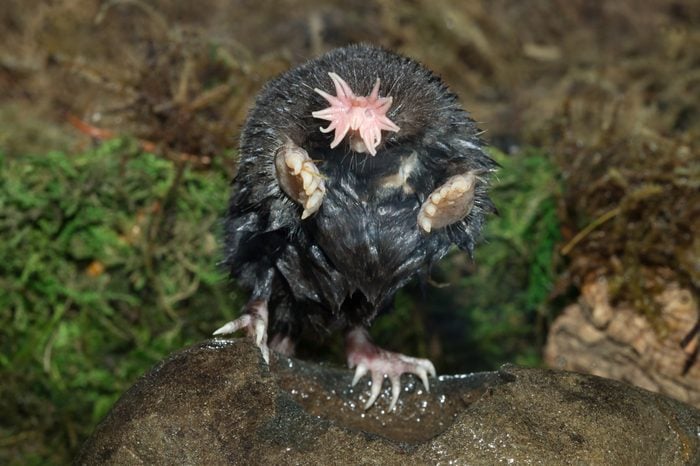
Connecticut: Star-nosed mole
Star-nosed moles, according to National Geographic, eat faster than any other mammal on Earth. They decide if something is edible in 8 milliseconds and devour their meal (mostly bugs) in less than two-tenths of a second. They owe part of their ability to the extremely efficient operation of their nervous system and partly to their hideous "noses." The star, which contains 100,000 nerve fibers contained into a space smaller than your fingertip, is the most sensitive touch organ in any mammal. They are also the only mammal known to smell underwater and again they have their grotesque snouts to thank. Moles blow bubbles into the water and then re-inhale them to catch a whiff of potential prey. If you think that's fascinating, meet the 10 animals with real superpowers.
8 / 50

Deleware: Common grackle
These birds may be labeled "common," but their foraging techniques are anything but. Grackles follow plows to catch invertebrates and mice, snatch leeches from the legs of turtles, raid nests and steal worms from other birds, wade in shallow water to fish, and use the hard keel on the inside of their upper mandible to saw open acorns. They also practice the strange habit of anting, in which they get low to the ground, wings spread, and let ants crawl all over them. It is postulated that the formic acid deposited by the insects gets rid of parasites. When they can't find ants, grackles have been known to use walnut juice, marigolds, lemons, limes, and mothballs to achieve the same results.
9 / 50
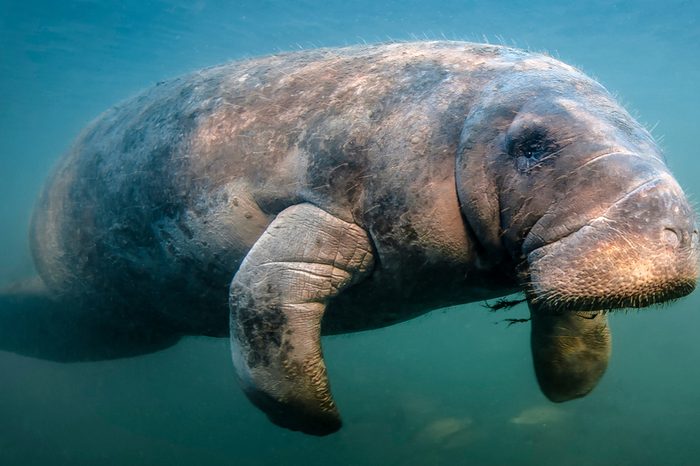
Florida: Manatee
Although manatees are born underwater and never go ashore in their lives, the mammals with egg-shaped heads are related to elephants, not dolphins or whales according to National Geographic. The blubbery gentle giants known as sea cows congregate near Florida power plant discharge pipes because the water is warmer there. Smithsonian.com reports that they eat for almost half the day, consuming 10 percent of their 1,200-pound body weight in plants.
10 / 50

Georgia: One-toed amphiuma
At first glance, it is easy to confuse the one-toed amphiuma for a water snake or an eel. In fact, one of its common names is the ditch eel. But, according to the Wildlife Resources Division of Georgia's Department of Natural Resources, it is a very rare elongated salamander with a unique two pairs of tiny seemingly useless limbs (common to salamanders) with a single toe on each (unique to this species). It lacks external gills, and although it has gill slits, it breathes by periodically lifting its nose out of the mud or water.
11 / 50
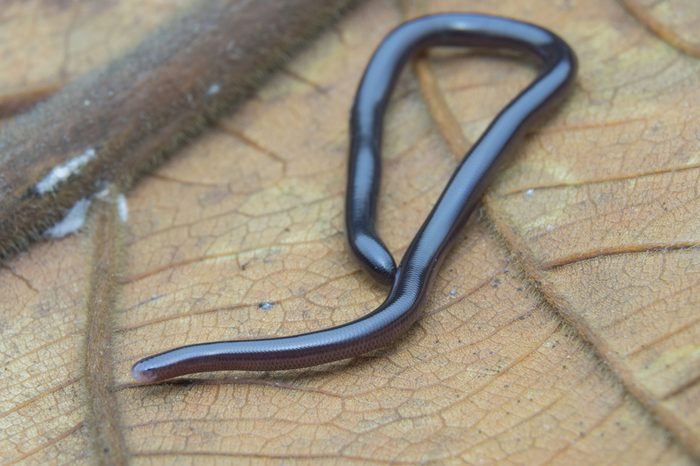
Hawaii: Brahminy blind snake
Hawaii's tourism boards would have people believe there are no snakes in paradise. And while there are not any that are indigenous to the 50th state, the claim is technically a fib. Let us be the first to introduce you to the blind snake, the world's tiniest snake. Most likely spotted on Hawaii Island and Kauai, this earthworm lookalike was introduced to the state in the 1980s, likely in potting soil from the Philippines. They have managed to survive on the islands because they are the only known parthenogenic snakes, meaning their unfertilized eggs hatch into new female clones. (Geckos also utilize this adaptation.) And because they eat termites and ants, which are also non-native, they do not have any measurable effects on the ecosystem.
12 / 50
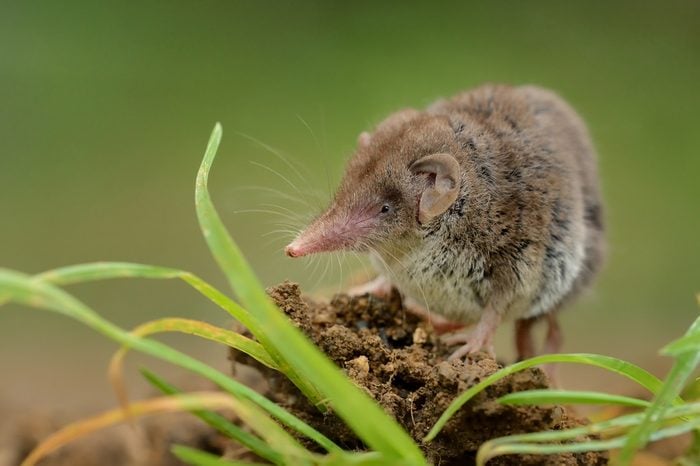
Idaho: Pygmy shrew
Weight watchers should be jealous of the second-smallest mammal in the world because despite consuming as much as three times its body weight every day and eating every three to four hours to maintain body heat, pygmy shrews usually only weigh less than an ounce and are two inches long. For them, their extraordinarily high metabolisms are more of a curse given it means they have to be on a constant hunt for food and can't sleep for more than a few minutes at a time. Shrews swim, use the tunnels and nests of other animals, and burrow through snow in pursuit of the next meal. To compensate for a short food supply in winter, they may lose up to 40 percent of their body weight, which basically makes them a bag of bones and organs.
13 / 50
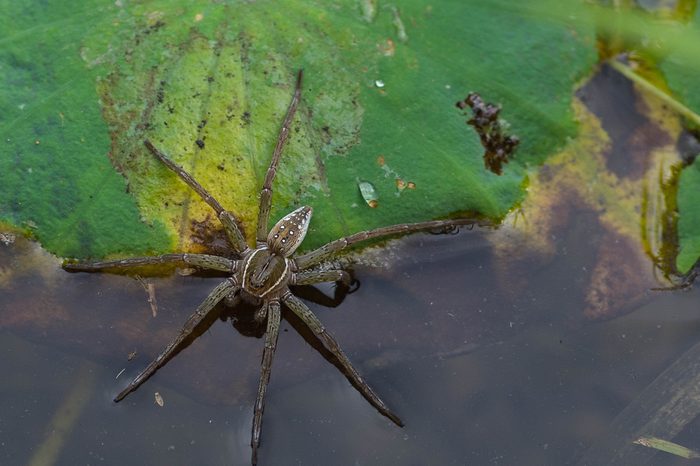
Illinois: Fishing spider
Spiders are generally creepy as a species, but a venomous one that can grow slightly wider than a human adult's palm and submerge itself for more than 30 minutes to fish for small aquatic dwellers like tadpoles is next level sinister. The hairs on a fishing spider's body trap air bubbles, which they use to breathe underwater while stalking their next meal. While down there, they also scope out the area above them because they can simultaneously eat insects skittering around and just above the water's surface. Oh, and did we mention that as part of the nursery-web family, females lay eggs on a silken mat which they wrap into a ball and then carry said ball around in her jaws until she finds an ideal spot for them to hatch? It is attached to a web until hundreds of spiderlings emerge all at once and then disperse on their own silky threads to start fresh lives of hunting and haunting your nightmares. These are 14 more of the most elaborate spider webs found in nature.
14 / 50

Indiana: Hellbenders
These two-foot long and flattened aquatic salamanders with a devilish name once roamed nearly all of the Ohio River tributaries, but numbers are dwindling at a startling rate. Fewer than 300 remain in the state, all in the Blue River, according to The Nature Conservancy, thanks to degrading water quality, loss of habitat, accidental fishing, and fatal human interactions. A rumor even puts them on plates at a Harrison County fish fry in the 1970s. It would be a shame to lose what Popular Mechanics calls "a living fossil" because relatives of the gentle mud puppy show very little external evolutionary as far back as 160 million years.
15 / 50

Iowa: Common conehead
No, they don't come from France but these insects with pointy pinched conical faces do consume mass quantities of grasses and corn crops. They have antennae longer than their bodies, strong jaws that can injure humans, and very long and powerful hind legs for jumping. Females have sword-like ovipositors to lay fertilized eggs inside plant tissue. According to InsectIdentification.org, they can be found by listening for their chirpy songs.
16 / 50

Kansas: Western hognose snake
If an animal Academy Awards existed, the hognose snake would be the reptilian Meryl Streep thanks to its convincing death scenes. (Although it can't help but turn its nose up at fame.) When a hognose feel threatened, Reptiles Magazine explains it hisses, flattens its neck, raises its head like a cobra, and feigns strikes. If that fails to scare away its enemy, it will roll onto its back and play dead. It emits a stinky musk, poops, and lets its tongue hang out, sometimes even excreting blood droplets. If flipped upright while in this state, it will roll over again and continue the charade. Try to spot the camouflaged snakes in these 10 photos.
17 / 50

Kentucky: Scorpion fly
Scorpion flies look Frankenstein-ed together. According to The Wildlife Trusts, they have a tail that looks like the stinger of a scorpion although they don't sting and it is not a tail at all. It's actually the male's clasper, which is used in courtship. Mating can be dangerous for males as the females have been known to kill their lovers. To dissuade her from post-mating murder, these garden/wood dwellers who have never met a stinging nettles bush they didn't like will offer a dead insect or a wad of saliva. Its head contains a long beak used to feed.
18 / 50

Louisiana: Roseate spoonbill
The spoonbill is hard to miss thanks to its millennial pink feathers. But it's the long speckled proboscis that leaves a lasting impression. Especially if you get to see one swinging it side to side to push away the muck in mudflats, tide pools, mangrove keys, and coastal marshes while on the prowl for crustaceans, snails, and various other residents of shallow waters. According to the Audubon Field Guide, they also use that beak as foreplay. Males and females first interact aggressively then huddle close, present twigs to each other, and wildly cross and clasp bills. For an unknown reason, the entire flock will suddenly fly up and circle the breeding area at the beginning of the season. They are no deadbeat dads either. They use the bill to gather materials to construct the nest should mating be successful and eventually help feed their young.
19 / 50
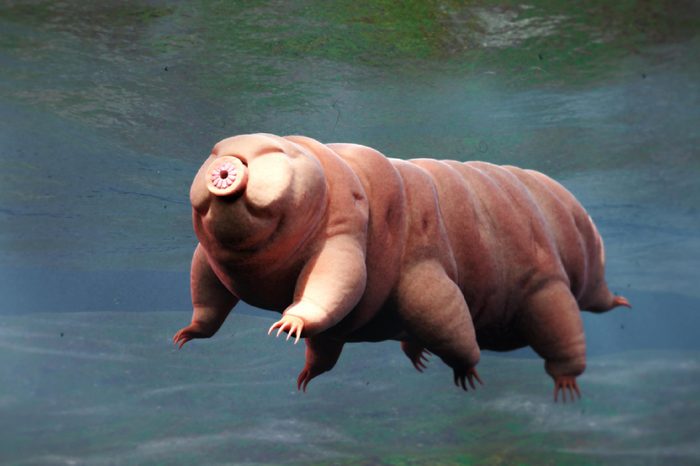
Maine: Tardigrade
An Oxford University study revealed that Tardigrades, eight-legged microscopic critters with a sucker-like pharynx on their faces, could outlive humans by 10 billion years because the sturdy water bears can survive extreme conditions like dehydration, freezing, autoclaving, exposure to the vacuum of space, and irradiation by using cryptobiosis to shut down their metabolism. They live in water and on lichen and moss in most countries and states including Maine. Meet 6 more immortal animals that can basically live forever.
20 / 50
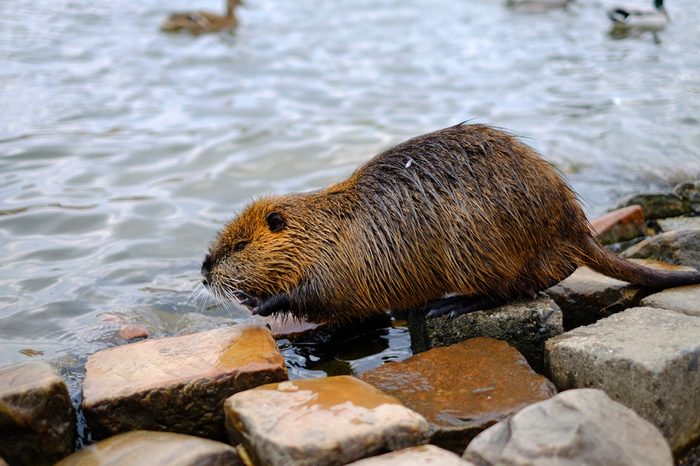
Maryland: Nutria
This massive semi-aquatic rodent was introduced to America back in 1899 to kickstart a fur-farm industry. When the market collapsed in the 1940s, U.S. Fish & Wildlife reports that thousands were released into the wild and have been reported in 40 states. Nutria spend their days demolishing vegetation and roots, damaging ditches and levies with its burrowing, reproducing like wildfire (females can breed 48 hours after giving birth), and frightening musophobes (someone afraid of rats) with their beaver-like looks. Their hind legs are smaller than rear ones giving them a hunchback appearance. They have large yellow-orange front teeth, heavy scaly tails covered in wiry hairs, and facial features set high on their heads. Then there's the vestigial toe dangling unconnected to the webbing that holds the other toes together. It does not show up in tracks. Female teats are also on the side of the body instead of the chest. Can you guess these other animals based on their tracks?
21 / 50
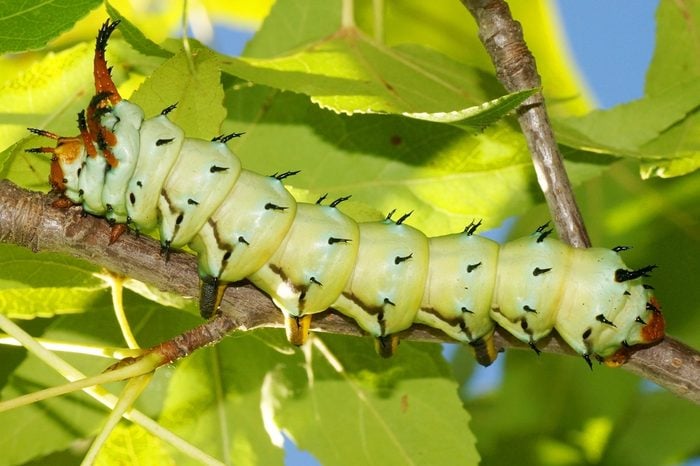
Massachusetts: Hickory horned devil
This is the kind of repugnant mug you can't un-see. The devil is the green, orange, and black caterpillar stage of the royal walnut/regal moth. But its looks are "an elaborate ruse." The horns don't even sting. Devils are also easily handled by humans. They molt five times becoming bright green on the fifth round. Before pupation, a larva expels its guts and changes color to turquoise before heading underground. When they emerge as moths, they have severely reduced mouths so they do not feed and can only live for about a week. Watch out for these 15 innocent-looking animals that are surprisingly dangerous.
22 / 50
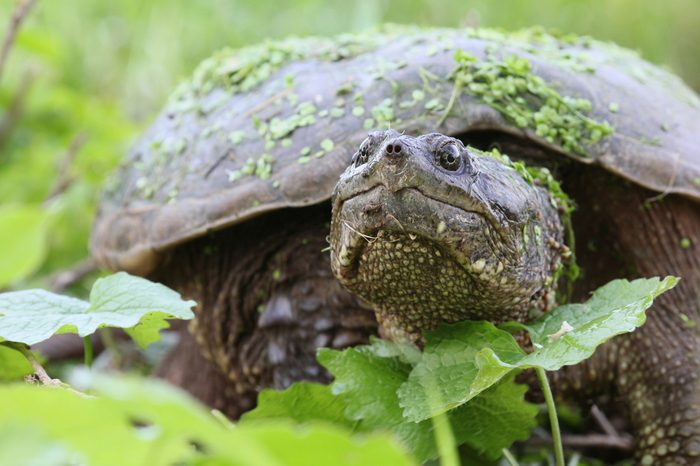
Michigan: Snapping turtles
Don't go insulting the largest turtles in North America because the snapping turtle will clap back. Equipped not only with a ferocious albeit toothless mouth, they have a growth on the tip of their tongues that looks like a wiggly worm reports the University of Michigan's Bio Kids website. While buried in the mud or hidden by vegetation, turtles use the "worm" to lure fish into their jaws and eventually bellies. Some scientists believe they have developed such an aggressive personality because unlike most of their relatives, they cannot retract their limbs or head into their shells for protection. The curmudgeonly turtles are solitary with social interactions limited to fighting with other males. To pick up a mate, turtles face each other and communicate with leg movements.
23 / 50
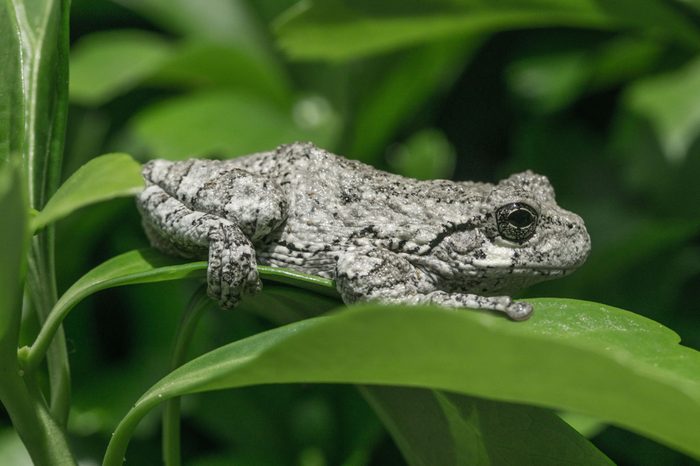
Minnesota: Grey tree frog
These frogs don't look bizarre, but they have developed a pretty unique adaptation that comes in handy in a state with famously brutal winters. The Twin Cities Pioneer Press details its ability to partially freeze during the winter. It produces large amounts of glycerol to protect its body during the freezing process, but its heart, breathing, and other vital functions can stop. Once it thaws, the frog will reanimate.
24 / 50
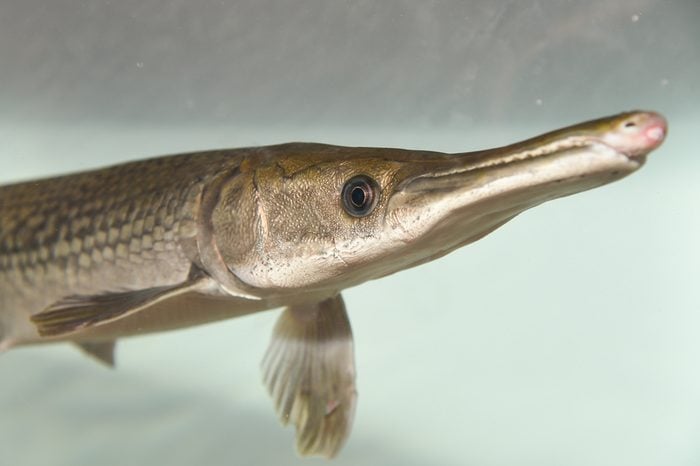
Mississippi: Alligator gar
These behemoth fish, which can grow more than eight feet long, look like they belong in a natural history museum because alligator gars retain many of their Cretaceous ancestors' primitive features including the ability to breath air, a body covered by sharp rigid scales, very sharp teeth, and much stronger bites than most lake fish you'll find lurking in lakes in many Southern states.Popular Mechanics also says they have a similar digestive system to sharks.
25 / 50
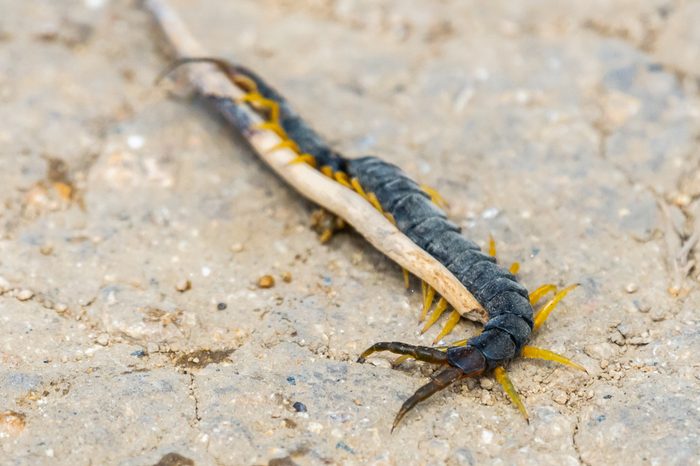
Missouri: Scolopendra heros
It's hard not to get the heebie-jeebies when looking at a photo of the giant desert centipede, the largest centipede in North America, and its 21 or 23 pairs of yellow legs, fangs, red head, and greenish-black body. The bright coloration is aposematic, meaning it should act as a warning to stay away. The centipede hunts invertebrates and small vertebrates including rodents and reptiles, sometimes reaching into the air to grab flying bugs, and uses its cell-rupturing, membrane-compromising venom to subdue its future food. It can also pinch with its last pair of legs to bring the pain according to the Missouri Department of Conservation. If you dare, check out 15 other animals so gross they'll make your skin crawl.
26 / 50

Montana: Pronghorn
Often confused for an antelope, pronghorns with their distinctive backward-curving horns belong to a family of mammals all their own. After the cheetah, they are the second fastest land mammal in the world running more than 53 miles an hour according to National Geographic ; even babies can outrun humans within a few days of being born. They can also go the distance if they cut down to half that speed. But despite long legs and the ability to achieve a running start, they rarely jump fences instead choosing to go underneath them. The pronghorn warning system is also guaranteed to make young children giggle: When frightened, the hairs on their behinds raises into a white patch that can be seen for miles.
27 / 50

Nebraska: Nine-banded armadillo
Of the 20 species of little-armored ones (the name's Spanish translation), only the nine-banded armadillo, which can actually have anywhere from seven and 11 bands despite the name, is found in the United States. Once relegated to southeastern states, their range is continually expanding northward and now the bizarre beasts with ossified dermal scutes, keratinized epidermal scales, long sticky tongues, and hairy undersides are often spotted in the Cornhusker State. The insectivore cannot curl into a ball and roll away from danger despite popular belief. Only two types of armadillos can ball up according to The National Wildlife Federation. But it can jump three to four feet in the air, float across rivers by inflating its intestines, hold its breath for six minutes while running across riverbeds, and quickly dig a snug trench to lodge itself in when in danger.
28 / 50
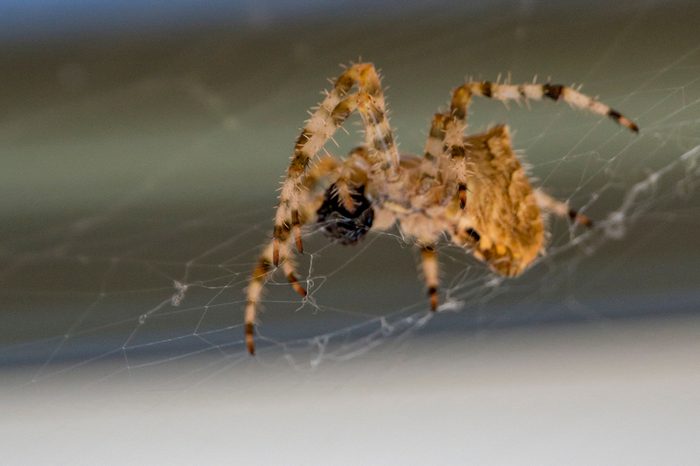
Nevada: Cat-faced spider
Also known as a jewel spider, it belongs to a subset of spiders known as angulates, which can be identified by the presence of two pronounced bumps on the top of its abdomen. Those bumps form the ears of the feline face found on this eight-legged creepy crawler. Sitting with its head toward the ground is this spider's preferred stance so most of the time the kitty appears upside down. Cat ladies have nothing to fear from this harmless-to-humans fellow.
29 / 50
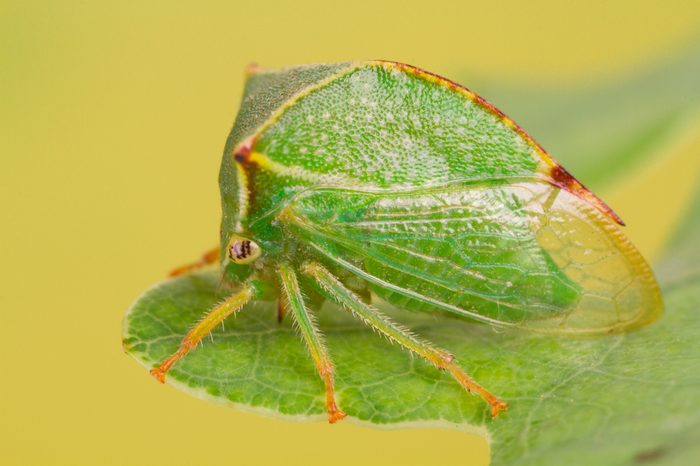
New Hampshire: Buffalo treehopper
The buffalo treehopper is a tiny green plant jumper that earned its name because the pest appears to have horns and a tail that resemble those of a bison. But the tail is actually just the pointy end of the ridge on its back and the horns are the colored protuberances that come out of the widest part of its head.
30 / 50
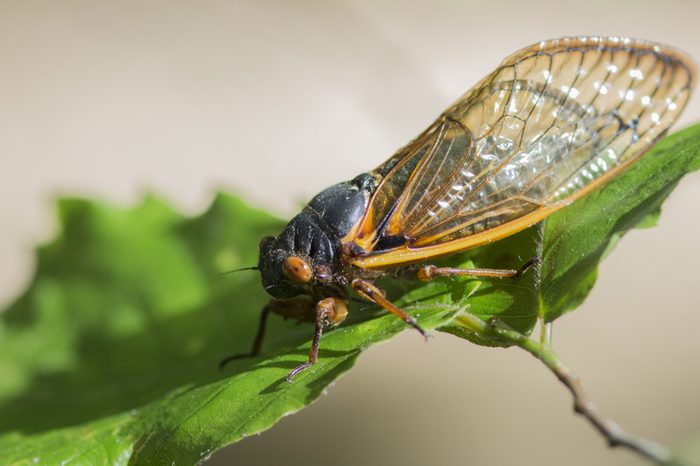
New Jersey: Periodical cicada
These red-eyed freaks of nature emerge from living underground, subsisting on tree-root fluids, every 13 or 17 years through chimneys/turrets they build out of mud and immediately shed their skin. Harmless cicadas ascend synchronously in tremendous numbers in spring, often after a light rain. Males band together as a chorus to sing to potential mates and within a couple of months, eggs are laid and the adults disappear once again. Don't worry, cicadas don't bite—but these 14 "harmless" bugs do.
31 / 50
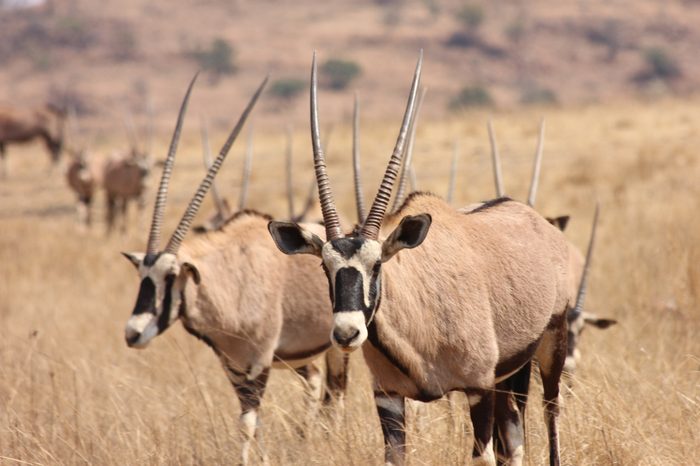
New Mexico: Gemsbok
These guys make the list simply because New Mexico is a strange place to find such a big wild herd. As their other name implies, the African oryx hail from another continent. According to Popular Mechanics, the gemsbok made their way out of Africa in 1969 when a group of 95 was transplanted from the savannahs of Southern Africa to the White Sands Missile Range and the surrounding area of New Mexico to give local hunters a big game target. That group thrived thanks to a lack of natural predators and now number more than 3,000. The beasts of the Southern Africa wild, which stand as tall as the roof of a car on average, are often seen in White Sands National Monument.
32 / 50
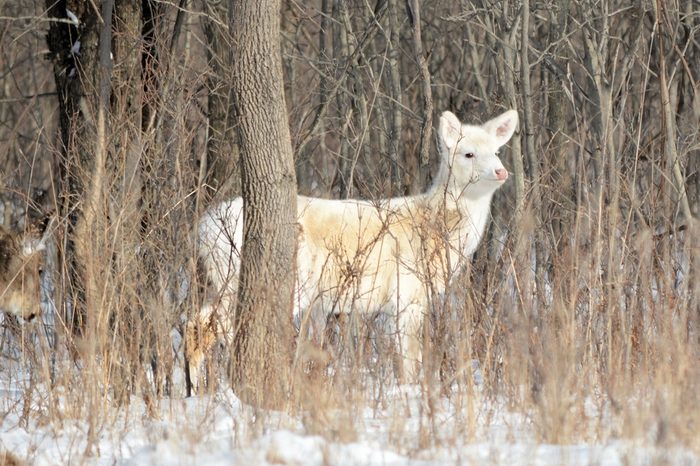
New York: Seneca white deer
The Seneca Army Depot, a wildlife sanctuary and military museum built on a 7,000-acre former munitions and nuclear bomb storage facility in the Finger Lakes region, is home to the world's largest herd of white deer. These ghost deer, a natural variation of the white-tailed species caused by a recessive gene, are not albinos. They are leucistic and therefore lack all pigmentation in their hair, but have normal noses and brown eyes. According to the depot's non-profit organization's website, the limited predators and controlled hunting on the defunct base allowed numbers to increase for more than 60 years.
33 / 50

North Carolina: Glass lizard
Abundant in the eastern part of the state, these guys are often mistaken for snakes. But glass lizards are actually legless (usually) lizards because of their head shape, movable eyelids, and external ear openings. Some have retained small stubby useless vestigial legs. The name refers to the tendency of their tails to easily break into several pieces like glass when they drop them to avoid being captured or eaten. It can take years for the tail to grow back and it is almost always smaller than its predecessor.
34 / 50
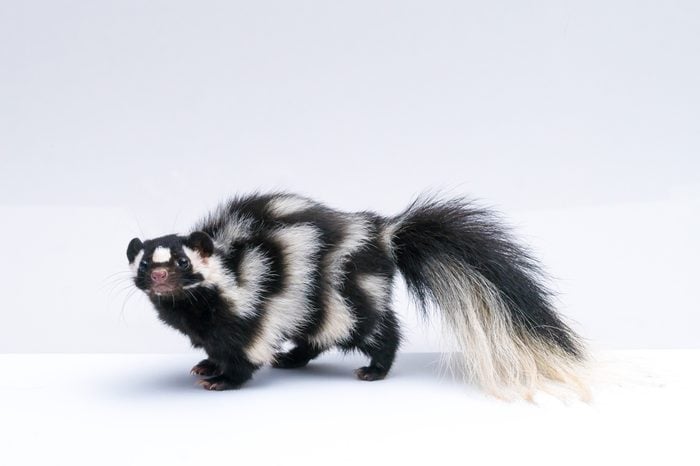
North Dakota: Spotted skunk
A unique fur pattern makes these skunks stand out in the crowd of sprayers. But the name is a bit of a misnomer as they only have one spot—on the forehead. They are however missing that traditional center white stripe and look more like a weasel. In many other ways, these skunks are like your average backyard intruder, especially when it comes to their defense mechanisms. First comes the warning. There's front feet stomping, tail raising, hissing, and sometimes a handstand-like position which puts their shooter (aka their tushes) in the air. If that doesn't work, two glands on the sides of the anus will release odorous oil through nipples.
35 / 50
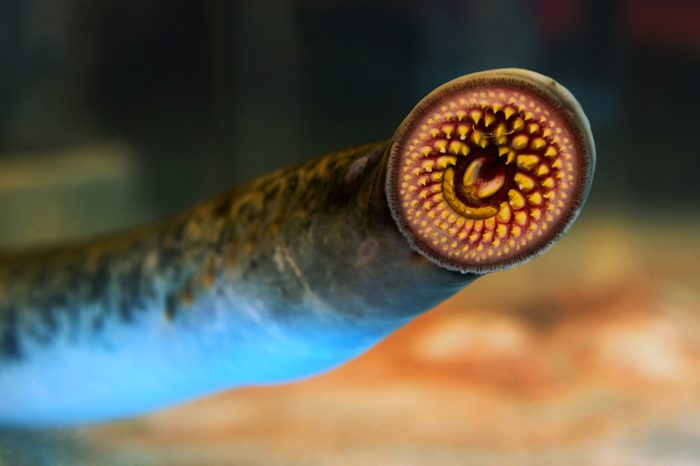
Ohio: Lamprey
They wwaaaant to suck your blood. Well, maybe not your blood per se, but these aquatic vampires attach jawless disc-shaped mouths to fish in streams and rivers and feast on their blood. According to Ohio's Division Of Wildlife, seven species including the non-native sea lamprey are found in Buckeye State waters. Sea lampreys also use their gnarly mouths to suction cup and move stones to form a breeding pit. Pits are made and used by the whole community of parasites.
36 / 50
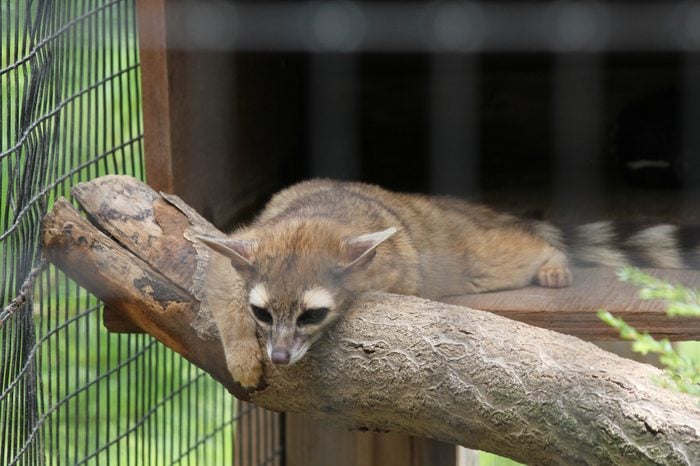
Oklahoma: Ringtail
If you are lucky enough to catch a glimpse of these timid and tiny (usually weighing only a pound or two and are 24 inches in length) nocturnal animals, it's likely you'll mistake them for a really pretty housecat, an escaped zoo lemur thanks to oversized eyes and a long ringed tail of 14 to 16 black-and-white stripes, or for a fox because of their pointy muzzle and whiskers. But they are relatives of coatis and raccoons. They are great climbers. According to the Arizona-Sonora Desert Museum, having the ability to rotate their back paws 180 degrees allows them to ascend walls, trees, cliffs, and even cacti. Their ears have also adapted to move independently so ringtails can listen to what's happening in front and behind them simultaneously.
37 / 50
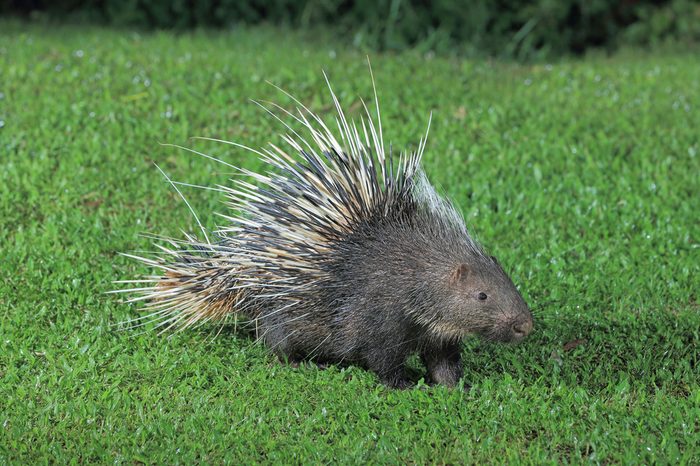
Oregon: Porcupine
Generally found in the eastern half of the state and occasionally west of the Cascade Mountains according to OregonLive.com, it is best not to mess with porcupines. Covered in up to 30,000 sharp, barbed quills they use for defense, studies show the large, slow rodents are intelligent, able to learn, and have long memories, especially of mistreatment according to National Geographic. If rattling their quills doesn't scare off predators, they will ram backward into them as the quills cannot be shot out of the body. They do however grow back over time. They don't ask for trouble and are herbivores, but have been seen chewing on animal bones to sharpen their teeth and intake minerals like salt and calcium to stay healthy.
38 / 50
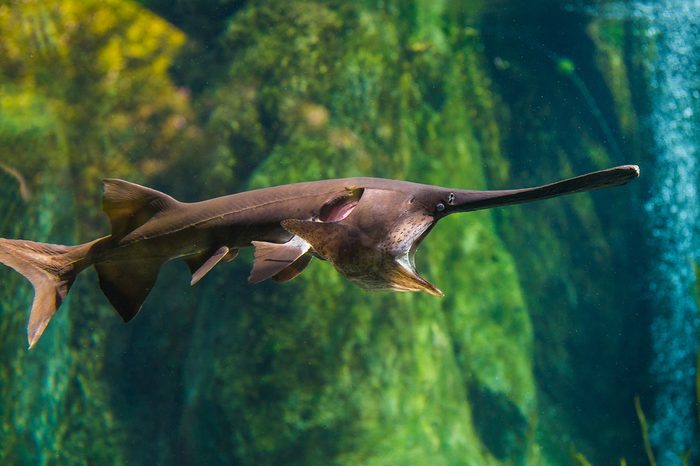
Pennsylvania: American paddlefish
Don't call it a comeback. The paddlefish has been here for years—since the Paleozoic era (300 to 400 million years ago) to be precise. Fossil evidence of this long-snouted filter-feeding fish is millions of years old. The paddle, which is longer than the rest of its head and flat on the top and bottom, might be a touch organ or it may help stabilize the fish when its jaw is extended. Strangely, young paddlefish do not have the trademark rostrum. They also have teeth while the adult versions, which can weigh more than 200 pounds, do not. Here are 10 more of the oldest living animals in the world.
39 / 50
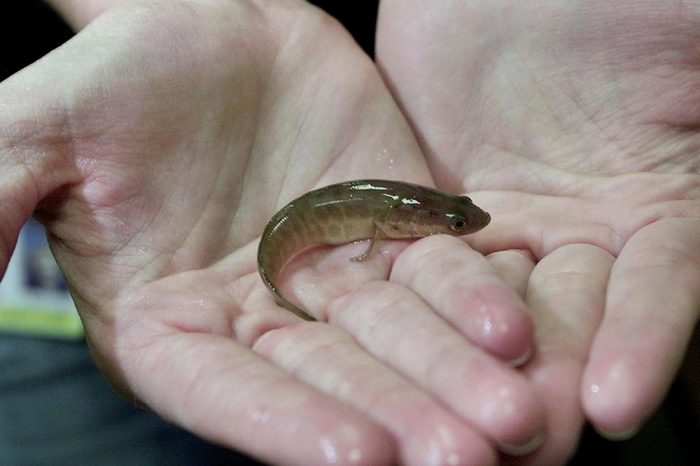
Rhode Island: Northern snakehead
National Geographic warns about the perils of ignoring this aggressive invasive fish with reptilian coloring, razor-sharp teeth that can tear human flesh, ravenous appetites, and an ability to be amphibious. That's right, these bad boys cannot only survive on land for three days using a primitive lung above their gills, they can walk on it by rhythmically swinging their muscular bodies and fins back and forth. Also a problem: snakeheads reach sexual maturity by two or three, mate up to five times a year, and can release 15,000 eggs at once.
40 / 50
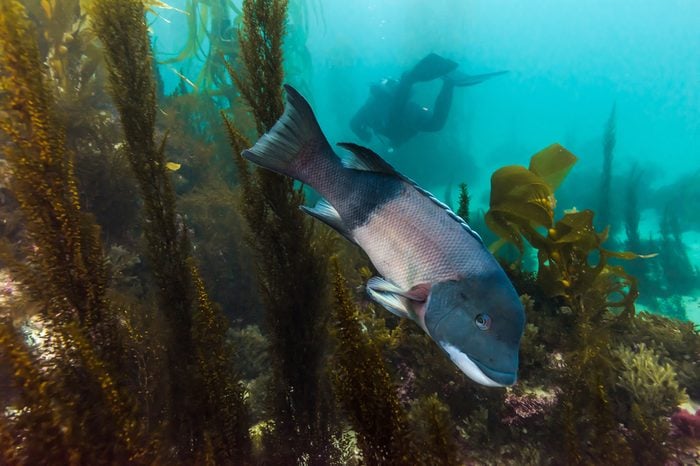
South Carolina: Sheepshead fish
Sheepshead fish, which can be found in waters from Massachusetts to Brazil, look like a genetic experiment gone wrong thanks to its human teeth. A Scientific American blog post explains that fully-grown convict fish—a nickname inspired by the distinctive black bars running down their silvery bodies—have well-defined incisors at the front of their jaw, multiple rows of molars, and strong grinders at the back. As with humans, this unique combination of choppers allows them to bite into armored prey like clams, crabs, and barnacles. Talk about a killer smile.
41 / 50
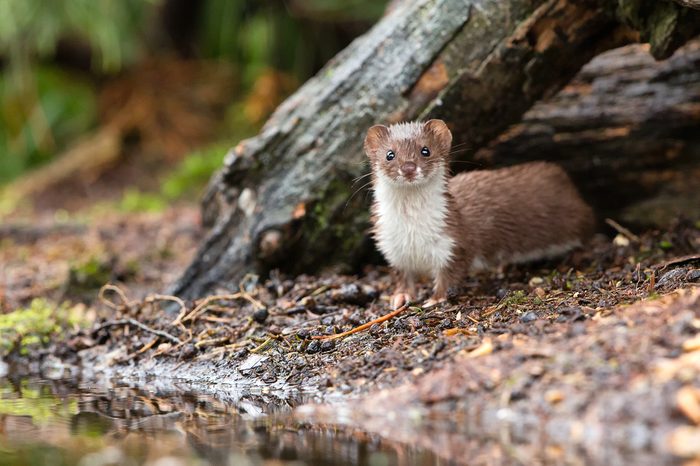
South Dakota: Least weasel
These guys are pretty darn cute, but they are also cutthroat hunters with huge appetites according to World Atlas. Their wee bodies—usually five to seven inches in length with an inch-long tail —transform when on the hunt for voles and mice. They can narrow their bodies to follow prey into a tiny burrow or hole the size of a wedding ring. Their coats also change color seasonally—brown in summer and white to match the winter snow—to provide better camouflage. Once they find a target, they swiftly latch onto the back of its head and bite through its skull with its very sharp teeth.
42 / 50
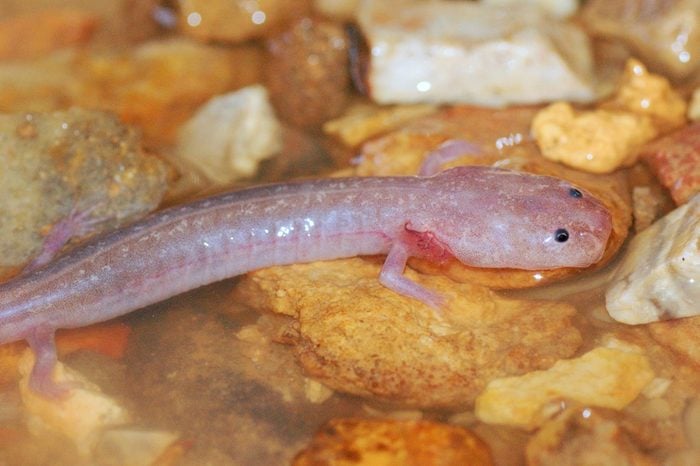
Tennessee: Cave salamander
The Tennessee cave salamander, a slimy pale pink creature with a pale belly and bright red feathery external gills, was designated the state amphibian in 1995. On the threatened list, they live in streams found inside caves and sinkholes, according to Tennessee Watchable Wildlife.
43 / 50
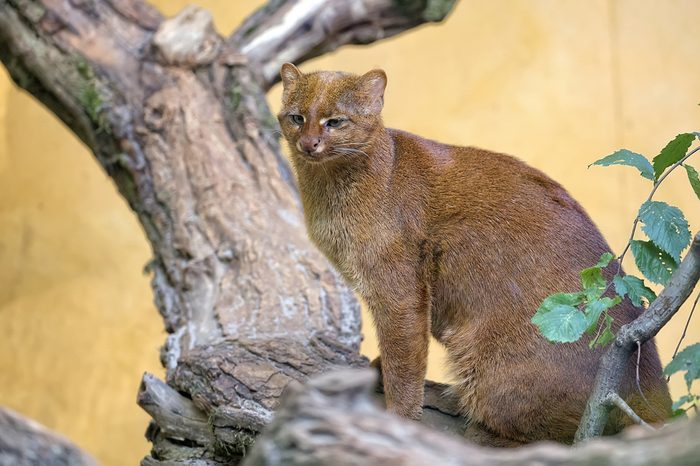
Texas: Jaguarundi
Despite its name, the jaguarundi's closet relative is the mountain lion. It does not share either's ferocious reputation mostly because the rodent hunter is only 30 inches from nose to tail. They are also born with spots like a leopard but lose them with age. The mini cat that looks more like a weasel than a cougar is common in Central and South America, where it was used as a Pied Piper on small village rat populations, but the Gulf Coast of the Lone Star State is the only place they are found in the states, according to Big Cat Rescue. The often solitary animals occasionally forage and travel in pairs, communicating with 13 distinct recorded vocalizations.
44 / 50
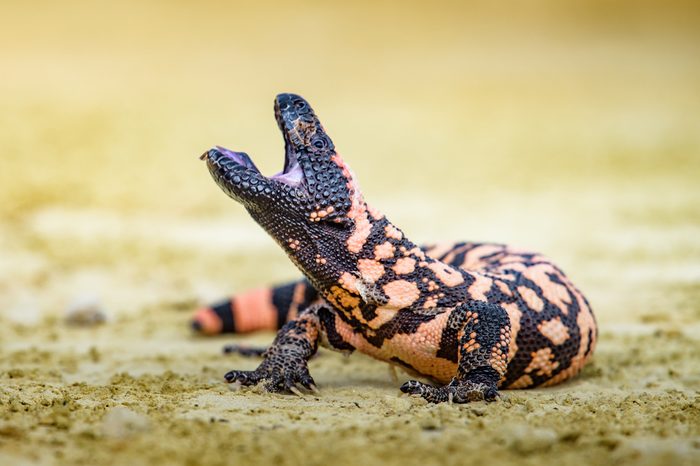
Utah: Gila monster
These black and ivory, pimply relatives of Komodo dragons have small hidden beady eyes and look like they are missing lips. Fortunately for humans, they spend 95 percent of their time underground and lumber around slowly when they do emerge because they are incredibly venomous. When they bite, poison secreted by their salivary glands is propelled through their teeth by chewing and capillary action into their victim. Pioneers used to believe their breath was toxic, but in an ironic twist of fate, peptides found in their venom have been shown to inhibit lung cancer growth and treat diabetes, according to the U.S. Food and Drug Administration and University of North Carolina at Chapel Hill research.
45 / 50
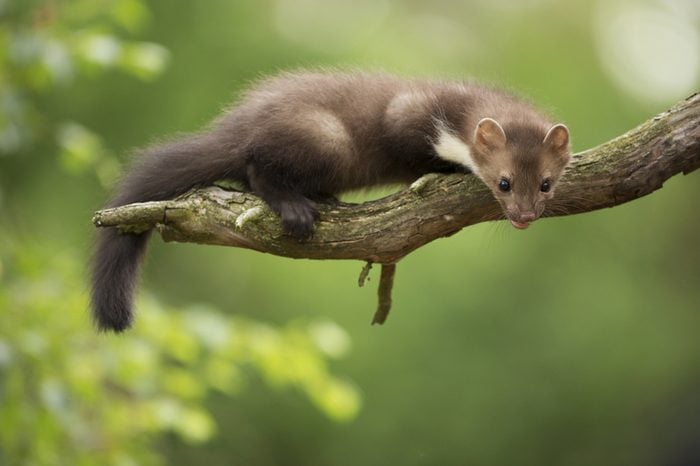
Vermont: Marten
These mink-like, housecat-sized omnivores were long considered extirpated from the boreal forests of the Green Mountain State despite an attempt to reintroduce them from 1989 and 1991. But Vermont's Department of Fish and Wildlife started reporting new sightings of the shy guys in 2014. They average 21 to 26 inches long with a third of that length coming from their bushy tails. As agile climbers, they spend lots of time in trees hunting for squirrels and chipmunks, nesting, and birthing their annual litters. It can rotate its hind legs to descend trees headfirst. Don't miss these other adorable animals you likely don't know exist.
46 / 50

Virginia: Assassin bug
This is the kind of insect nightmares are made of—narrow heads, wide abdomens that generally flare upward, "butts" that tip into the air, black bodies with bright red markings, and a terrifying fang that can inflict an intense bite on humans. They earned their names because they move nimbly and rapidly when on the hunt. Powerful front legs pin down insects while a strong beak emerges from its hiding place under the head and repeatedly stabs it like a serial killer. Once dead, it sucks out the insect's insides.
47 / 50
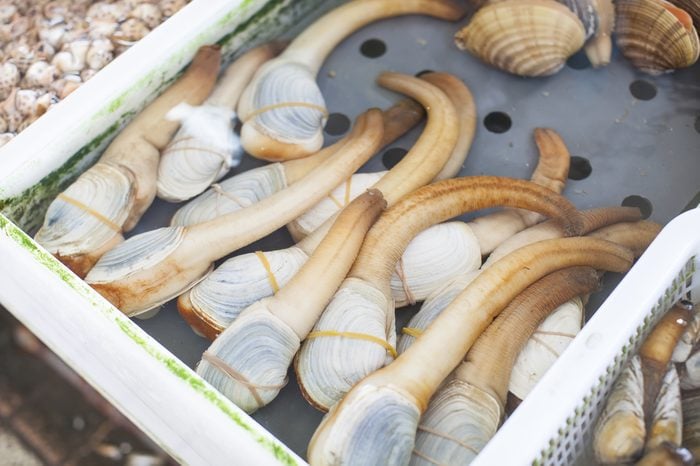
Washington: Geoduck
The largest intertidal and biggest burrowing clam in the world (as well as one of the longest-living animals) makes its home in the chilly coastal substrates and silts of the Pacific Northwest and British Columbia. The valves stay open in adult geoducks because the body and siphons are too large to retract. This defining feature inspired the Chinese to refer to them as elephant trunk clams. It can stretch its neck 24 inches from its body. Geoducks, considered a delicacy in culinary circles, position themselves about 3 feet in the sand and then hang there for 100 years.
48 / 50
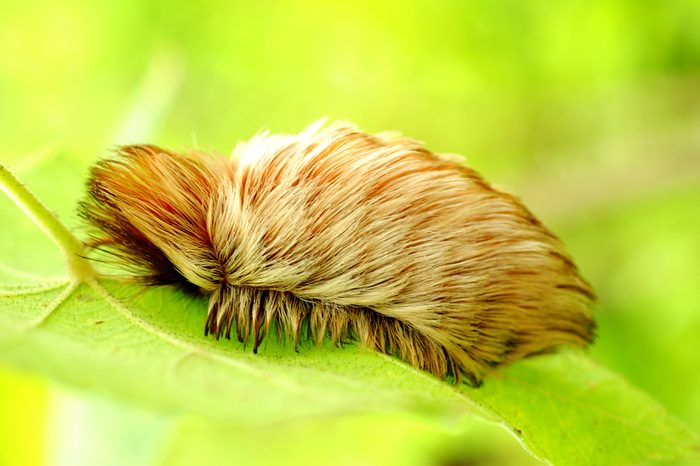
West Virginia: Puss caterpillar
Looks can kill in the case of these wooly slugs. It may look furry and soft, but the long brown silky hairs of the puss caterpillar hide hollow poisonous spines that can cause intense pain, swelling, itchy rash, anxiety, fever, muscle cramps, swollen glands, and vomiting, according to the University of Michigan. This makes them the most poisonous caterpillars in the United States.
49 / 50
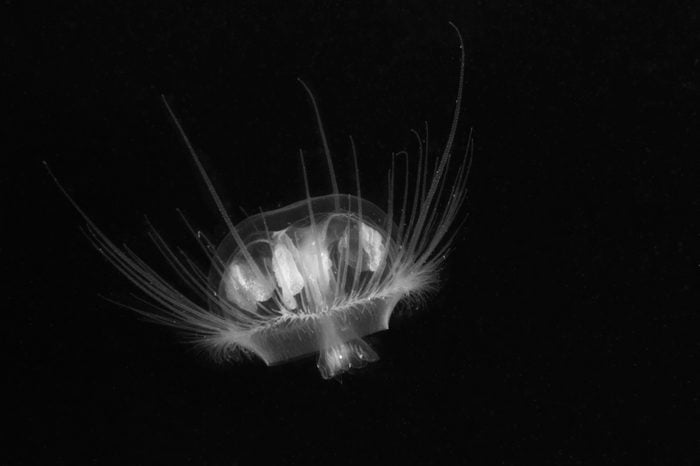
Wisconsin: Craspedacusta sowerbii
Warning: You might never look at lakes in the same way again after reading about this globular creature Popular Mechanics reports has been sighted numerous time in the fresh waters of America's Dairyland despite being indigenous to China. But you can exhale as the one-inch Craspedacusta sowerbii, a freshwater jellyfish or hydra relative, has stingers far too small to pierce human skin. If you want to witness them, the best time is August or September in calm shallow waters although inexplicably their numbers vary wildly from season to season.
50 / 50

Wyoming: Wolverine
No, Hugh Jackman doesn't finish out the list. We're talking about the largest terrestrial member of the Mustelid family with its broad head, beady eyes, and minor underbite. These beasts are survivors adapted to take on polar vortexes with no need to hibernate thanks to their dark oily fur that withstands frost. Wide feet act like natural snowshoes and upper molars at the backs of their mouths are rotated 90 degrees to allow them to rip meat from frozen-solid carrion. They also have the energy to travel some 15 miles a day in search of food and females practice embryonic diapause, a delayed implantation of the embryo to the uterus months after breeding. Interestingly, when their bundles of joy finally make an appearance, they are pure white. Now, see the 12 animals that only exist in one place in the world.
Originally Published: September 30, 2019
Source: https://www.rd.com/list/strangest-animal-found-in-each-state/
0 Response to "Funny Animals in the Southern United States"
Post a Comment